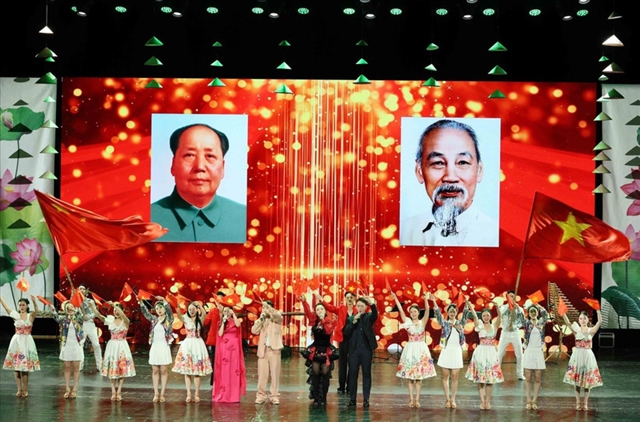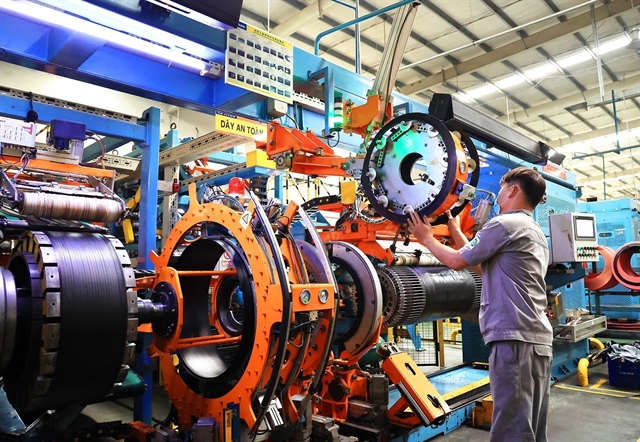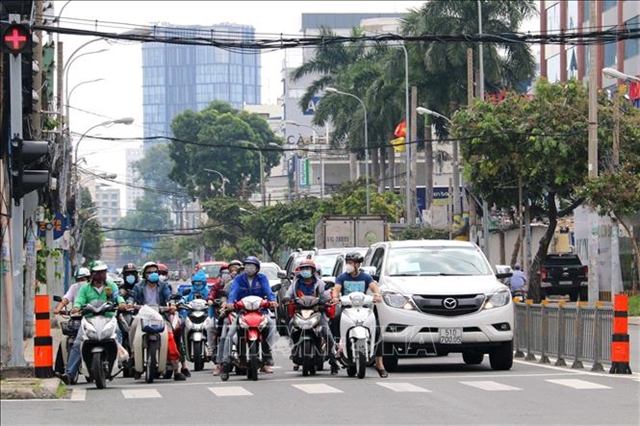 Economy
Economy

 |
| Car tyres are produced at Sailun Vietnam Co in Tây Ninh Province. — VNA/VNS Photo Hồng Đạt |
HÀ NỘI — Việt Nam's index of industrial production (IIP) fell 14.6 per cent in January from the previous month and 8 per cent from the same period last year, the General Statistics Office (GSO) has announced.
The GSO attributed the IIP reduction to the Lunar New Year (Tết) holiday which fell in January. Due to the Tết holiday, the number of working days in January was 8-10 days fewer than in December and January 2022.
The office also blamed the decline in industrial production in the first month of this year for a drop in the number and size of orders.
During the month, the processing and manufacturing industry saw the most significant IIP drop with 9.1 per cent. The mining industry followed it with 4.9 per cent and the electricity generation and distribution sector with 3.4 per cent. Meanwhile, the water supply, waste-water treatment and management activities recorded an IIP increase of 3.7 per cent.
Key industries that recorded substantial declines in January included means of transport, down 27 per cent; motor vehicle production (24 per cent); apparel production (21 per cent); electrical equipment (19 per cent) and metal production (15 per cent).
On the contrary, several industries saw a hike in industrial production, such as beverage production, up 18 per cent; exploitation, treatment and supply of water (6 per cent); and repair, maintenance and installation of machinery and equipment (4 per cent).
The GSO also outlined industrial products posting significant IIP declines in the first month, including liquefied petroleum gas (LPG), down 33 per cent; motorbikes (32 per cent); automobiles (32 per cent); steel bars and sugar (26 per cent); and televisions (24 per cent).
Among localities that experienced a significant decrease in industrial production were Vĩnh Phúc (29 per cent); Hà Nội (23.2 per cent); Vĩnh Long (23 per cent); HCM City (21 per cent); Hải Dương (20 per cent); Bình Dương (17 per cent); Đồng Nai (16 per cent) and Bà Rịa-Vũng Tàu (14 per cent).
The localities mentioned above all had large-scale industrial production. When their industrial production indices fell sharply, it would affect the industrial production of the whole economy, the GSO explained.
However, these provinces are making efforts to facilitate their industrial production in 2023. HCM City is a good example.
Nguyễn Nguyên Phương, deputy director of the municipal Department of Industry and Trade, said that his department is implementing a programme to improve qualifications, management capacity, productivity, and product quality management for enterprises in supporting industries.
He said it is also supporting enterprises to supplement resources and improve competitiveness, adding that solutions to stimulate investment in supporting industries in this period are also essential.
The municipal People’s Committee also passed a plan to carry out the supporting industry development programme between 2022-23 with assistance in supply-demand connection, production management, and human resources training.
For its part, the Ministry of Industry and Trade said it would actively implement the project to restructure the industry and trade sector to facilitate the country's industrial production in 2023.
Top priority would be given to creating products under national brands. These products could be competitive in regional and world markets, participating more deeply in the global value chains.
The ministry would continue restructuring industrial production sectors, focusing on increasing the proportion of processing and manufacturing industries and reducing the proportion of processing and assembling for industrial products manufactured in Việt Nam.
At the same time, it would review mechanisms and policies affecting each industry and product, gradually remove difficulties for enterprises and increase localisation rate.
Last year, the country's IIP went up 7.8 per cent year-on-year, with a growth of 6.8 per cent recorded in Q1, 9.8 per cent in Q2, 10.9 per cent in Q3, and 3 per cent in Q4.
Sectors posting impressive growths in 2022 were beverage with 32.3 per cent; medicine, pharmaceutical chemistry and herbs (19.2 per cent); machinery production (19 per cent); wood and wooden products (17 per cent) besides processed seafood (16 per cent), phone parts (15 per cent) and motorbikes (10 per cent).
In the year, Bắc Giang saw the best IIP growth with 31.5 per cent, followed by Cần Thơ (30 per cent), and Vĩnh Long (25 per cent). — VNS



.jpg)
